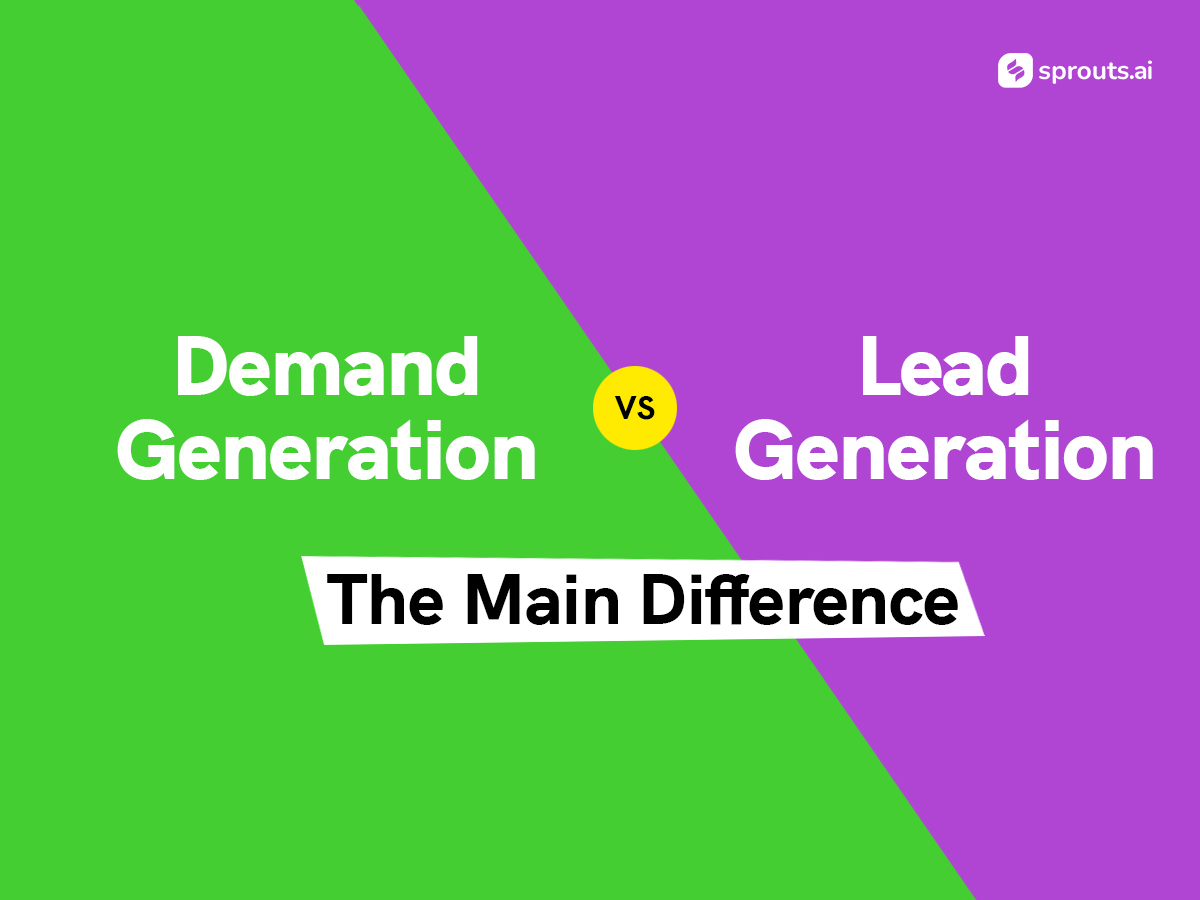Demand and Lead Generation are often used interchangeably in marketing, creating confusion. Some argue there’s no need to distinguish between them, but is that the case? Understanding these nuances is crucial for businesses crafting a comprehensive marketing strategy that delivers tangible results. Gartner’s research shows marketers invest equally in performance marketing (for conversions) at 50.2% and brand awareness and engagement at 49.8%.
Familiarizing yourself with the main variations between demand generation and lead generation can ensure the success of your inbound marketing efforts. Let’s read on to investigate these differences.
I. Understanding the Foundations:
a. Demand Generation: Demand Generation is the art of sparking interest and curiosity around a product or service. It’s about creating a market need and positioning your brand as a solution provider without revealing your offer’s full scope. This is the preliminary phase—the spark that ignites curiosity without exposing the entire picture.
b. Lead Generation: Conversely, Lead Generation is about translating that curiosity into tangible interest. It involves strategically collecting information, usually contact details, from individuals who have expressed specific interest in your offering. It’s transitioning from general interest to a potential customer actively engaging with your brand.
II. Primary Objectives in Focus:
a. Demand Generation: The primary goal of Demand Generation is to build a foundation for future conversions. It’s about fostering brand awareness, creating a positive perception, and educating the audience about the value of your product or service.
b. Lead Generation: Lead Generation, on the other hand, is more transactional. The primary objective is to convert interested parties into actionable leads. This is often achieved by offering something of value—a lead magnet—in exchange for their contact information.
III. Timing Matters:
a. Demand Generation: Demand Generation operates in the early stages of the buyer’s journey when potential customers explore solutions but may need more time to be ready to commit. It’s about establishing a presence and setting the stage for future conversions.
b. Lead Generation: Lead Generation comes into play when prospects have moved beyond mere curiosity. These individuals actively seek solutions and are willing to provide their details in exchange for valuable resources or information.
IV. Tailoring Content Strategies:
a. Demand Generation: The content in Demand Generation is broad and educational. It involves creating blog posts, infographics, webinars, and social media content that capture attention and generate interest without delving too deeply into specific details.
b. Lead Generation: Content in Lead Generation is more targeted and specific. It revolves around addressing the needs of potential customers directly. This might include whitepapers, case studies, or free trials—content designed to entice prospects into providing their information.
V. Channels Utilized:
a. Demand Generation: The strategy here involves casting a wide net. Demand Generation aims to reach a broad audience and create widespread awareness by utilizing various channels like social media, content marketing, SEO, and even traditional advertising methods.
b. Lead Generation: Being more targeted, Lead Generation focuses on channels that allow direct interaction with potential customers. Email marketing campaigns, gated content on websites, and other strategies are employed to capture leads from those who have shown specific interest.
VI. Measuring Success:
a. Demand Generation: Success in Demand Generation is often measured through brand awareness metrics, social media engagement, and overall reach. It’s a long-term game focused on building a lasting presence in the market.
b. Lead Generation: The success of Lead Generation is more immediate and tangible. It is directly tied to conversion rates and the number of qualified leads acquired, providing concrete evidence of the effectiveness of your campaigns.
VII. Nurturing the Funnel:
a. Demand Generation: Nurturing in Demand Generation involves building relationships over time. It’s about staying top-of-mind, consistently providing valuable content, and being the first choice when the need for a solution arises.
b. Lead Generation: The nurturing process in Lead Generation is more hands-on. It’s about efficiently moving leads through the sales funnel by providing the correct information at the right time, ultimately facilitating a conversion.
VIII. The Sync Between Demand and Lead Generation:
It’s crucial to recognize that these two strategies are not mutually exclusive but work in tandem to create a holistic marketing approach. While Demand Generation sets the stage by creating interest and broad awareness, Lead Generation transforms that interest into tangible leads. This synergy is the linchpin for sustained growth in the ever-evolving marketing landscape.
IX. Striking the Right Balance:
The effectiveness of a marketing strategy lies in striking the right balance between Demand and Lead Generation. A business needs both—the wide net to capture interest and the targeted approach to convert that interest into actionable leads. It’s a delicate dance that requires a nuanced understanding of your audience and the stages of the buyer’s journey.
X. Adapting to Market Dynamics:
The marketing landscape is ever-changing, and what works today might need adjustment tomorrow. Being agile and adaptive is key to navigating the nuances of Demand and Lead Generation. Regularly reassessing strategies, experimenting with new channels, and staying attuned to market trends ensure that your approach remains effective.
Demand Generation sets the stage by creating interest and awareness, while Lead Generation capitalizes on that interest, converting it into tangible leads. The alignment of these two segments is the key to sustained growth. Striking the right balance and adapting to market dynamics ensure that your marketing strategy remains relevant and effective in driving meaningful results for your business.

